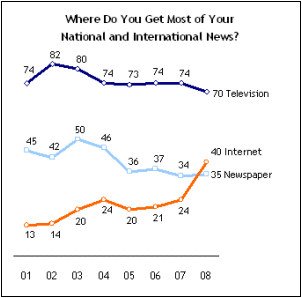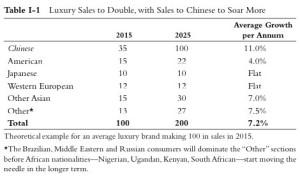“Hey, have you seen the BuzzFeed video I shared on Facebook yesterday?”
Instead of saying “Hey, have you seen the headline for the newspaper yesterday?”, nowadays a daily conversation between two friends often begins with discussing the trending articles/topics on BuzzFeed and other social media sites. The Internet has been selected as one of the most important inventions in human history. It brings us convenience, provides us a chance to connect with the rest of the world at our fingertips, further accelerates the evolution of print journalism, and starts a new chapter for digital journalism.
When looking specifically at the way content is distributed to audiences, from the beginning of 1800s to the 21st century, the development of newspaper can be divided into three main eras, Push, Pull, and the combination of Push and Pull. The Push era started with the birth of traditional journalism and newspapers. The word “Push” essentially means providing content, or pushing content toward its audience. For instance, news reporters will pursue and generate stories that are assigned by their editors and the audience will become a receiver of the stories and information provided by the newspaper. In the Push era, advertisement plaid an important role in the way newspapers operated. Aside from annual subscription fees, advertisements became a major revenue source for the newspapers. Take prominent newspaper, The Huffington Post, as an example; in order to attract audiences of all types to read its newspaper, The Huffington Post delivers new stories and content on a wide variety of topics such as “Politics, business, entertainment, environment, technology, popular media, lifestyle, culture, comedy, healthy living, women’s interests, and local news” through multiple platforms. (“The Huffington Post”, 2013) Huffington Post’s online website generates huge levels of viewership, making it extremely valuable to advertisers seeking high-visibility advertising space. Its’ uncanny ability to attract viewership valued it at above 300 million at the time it was sold to its current parent company, AOL.
In 2014, according to a Pew Research Center analysis of Alliance for Audited Media (AAM) data, “both weekday and Sunday circulation of newspapers fell around 3% from the previous year.” (Barthel, 2015) With the decline of circulation, newspapers and journalists were trying to develop new ways to attract the audience. Demand Media, an Internet and content driven company based in Santa Monica, California, serves as an example of the Pull era. Owning online website eHow and Cracked, Demand Media is known for its ability to generate content based on its audiences’ needs, and enables its content creators to reach larger audiences in various categories. Demand Media’s “eHow” website owns massive amounts of articles and more than 2 million videos for its users to find answers to their questions and encourage its users to share their experiences with each other. By means of extensive research, Demand Media understands what kind of content its users need, and creates websites based on its category. The company also believes that content wouldn’t survive without community and conversation. Besides the website eHow, which focuses on topics such as cooking recipes, decorations and lifestyles, Demand Media has also created the on-line website “Cracked” in order to fulfill the needs of the younger generation and audiences who are interested in light-hearted content.
Although Demand Media and its content-driven websites have been very successfully in the first few years, critics have cast doubt on Demand Media and other similar websites’ abilities to “place search engine optimization goals over factual relevance” in order to obtain high amount of revenue in advertising. Through multiple analysis on Google search and the realization of what content is needed by the mass public, Demand Media utilizes its freelancers to create fast and cheap content. It is using the quantity over quality strategy. “No need for quality content produced by well-paid journalists: if you know how to perform search engine optimization, your low quality, rapidly-produced video or “article” will top Google’s results and dwarf playing-by-the-book regular media’s traffic.” (Decugis, 2011)
With the birth of the Internet, more and more people, especially younger generation, prefer to consume news online relative to the percentage of people who consume news via television. Nonetheless, the percentage of people who consume news on the Internet, which 40%, is still 30% lower when compared to the percentage of people who consume news on the television, which is 70%. The percentage of people who consume news on the Internet is continuing to rise, while on the other hand, the percentage of people who consume news on the television is continuing to fall throughout the years. (Grabowicz, 2014) In both the Push and Pull eras there has existed a one-way communication between newspaper and its audiences. In the Push era, reporters and newspapers possess the bargaining power between the communications. The audience accepted and received news content that was selected and being processed by the newspapers. In the Pull era, the audience retrieved the bargaining power; they have the say in what content should be produced.
Different than the Push and the Pull era, the combination of the Push and Pull era enables two-way communication between news organizations and its audiences. Rather than one side holding the bargaining power, in the combination of the push and the pull era, both side of the communication serve as the provider and the receiver. In the combination of the Push and Pull era, BuzzFeed is one of the most successful examples. Jonah Peretti and several others co-founded BuzzFeed, a social news and entertainment company, in 2006 in New York City. Besides generating breaking news, entertainment news, and videos, BuzzFeed creates Quizzes to better engage with its audience. It currently has more than 200 million monthly unique visitors, with the number still growing rapidly. Recognizing the potential traffic its audience might bring to the website, BuzzFeed focuses on the shareable aspect in every story and ensures that each story is relatable for its audience. Creative director of BuzzFeed, Philip Byrne, once said “the company spends 50 percent of its time on creating content and 50 percent of its time thinking of how to make it shareable.” (George, 2015) Native advertising is one of the keys to BuzzFeed’s success.
“Native advertising is a form of paid media where the ad experience follows the natural form and function of the user experience in which it is placed.” Tyler James, Sharethrough’s Director, shared before his keynote presentation on native advertising. (Canarte, 2015) Take one of BuzzFeed’s quizzes as an example, “Which Donut Are You?”, in the quiz, the audience is asked a series of questions and based on those results, the audience is told in the end which kind of donut they are. It might not be hard to figure out the donut brand Dunkin Donut is the sponsor of this native advertising. Even though this native advertising is more obvious than the others, in the sub-heading, BuzzFeed put “you have to know” to encourage its audiences to click in. By incorporating native advertising to its website and capturing the important shareable aspect of its new content, BuzzFeed is able to generate content for its audience as the pusher and also as the receiver when receiving personal data from its audiences.
Tsan Chang, the general manager of ETtoday.net, one of the major online news website in Taiwan, has pointed out three future trends that carry possibility to dominate the online news and digital journalism. “ Having the experience to work in newspaper agency, witnessing the transformation of journalism from traditional, which is print journalism, to digital, which is online journalism, and currently working in an online news organization, I think the future trends for journalism as a whole is the rise of the mobile application increase dependence on social media, and the combination between data and journalism.”, Chang said.
Nowadays, people reply more and more on their cell phones. The percentage of people checking daily news using the mobile application has increased over the years. Many news organizations have developed their own mobile application in order to attract more audiences. Most of the mobile applications focus on providing as much information as it can to the mobile users in the shortest amount of time. Take the CNN mobile application as an example; when opening the application, major or breaking news content is displayed in the middle. Besides news content, the application notifies the mobile users first-hand breaking news when it happens. When asked whether social media servers as a threat to its online news organization, Chang replied, “instead of a competitor, for our online news organization, it is a plus. We have strong collaboration ties with social media such as Facebook. Many traffic of our website are brought by Facebook; when the audiences browsed through Facebook and saw our Facebook post of the news content, when wanted to know more, they would click on the picture, and that direct the users to our website.”
According to Chang, data servers as much more than an indicator of when to publish, what content to produce, where to post, and how to generate news content. Journalism has encountered a new trend of storytelling exclusively through data. More than just numbers in an excel document, data can take various forms and can be combined through a wide-variety of platforms to tell an interesting story. In the past, eye-catching and sensational content served as the key for online news websites. It attracted audiences and generated massive traffic to their website in order to create advertising revenues. Nowadays, data surpasses content as the key for online news websites.
It might be too early to judge whether the Internet has helped or destroyed the development of journalism. It certainly serves as a major factor and has pushed and accelerated the transformation of journalism from traditional to digital. Many news organizations are forced to change and adapt during the transformation; however, no matter it is pull, push, or pull and push, taker or receiver, journalism remains as an essential aspect of our lives.





